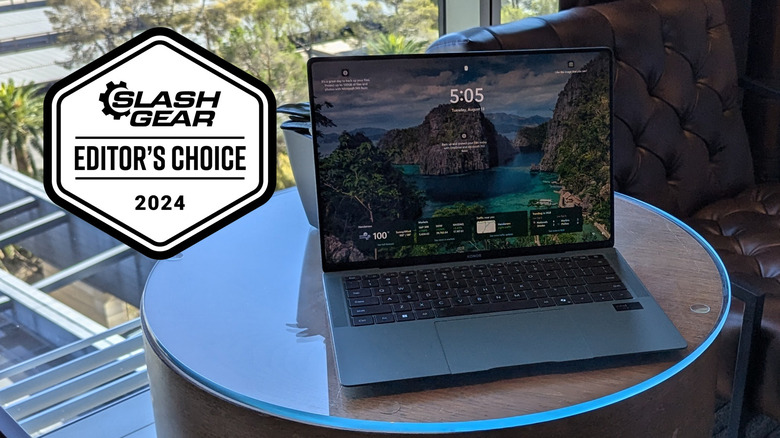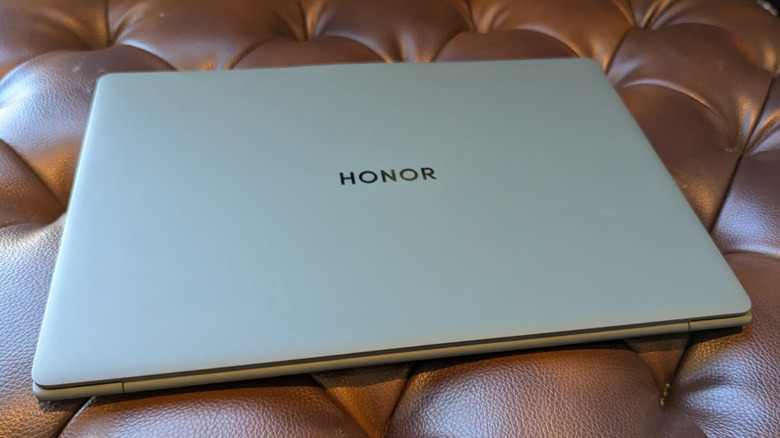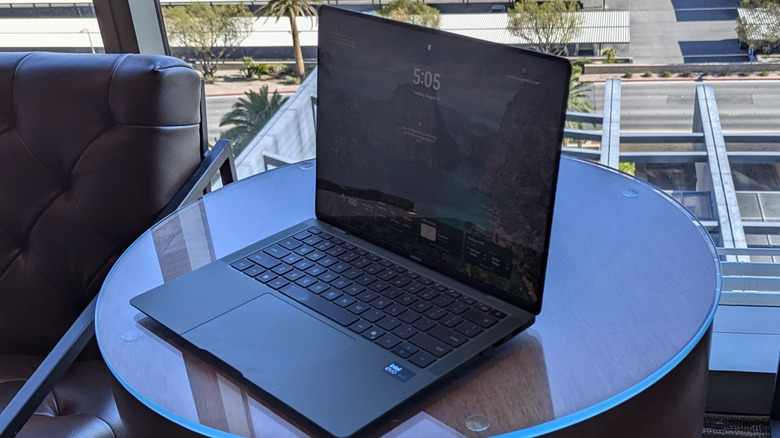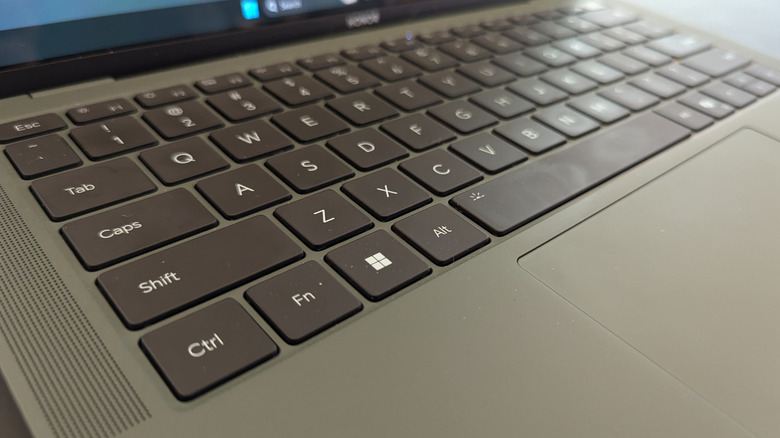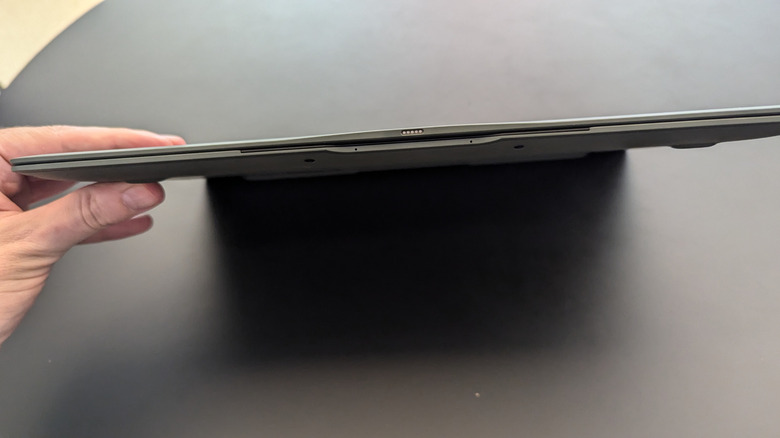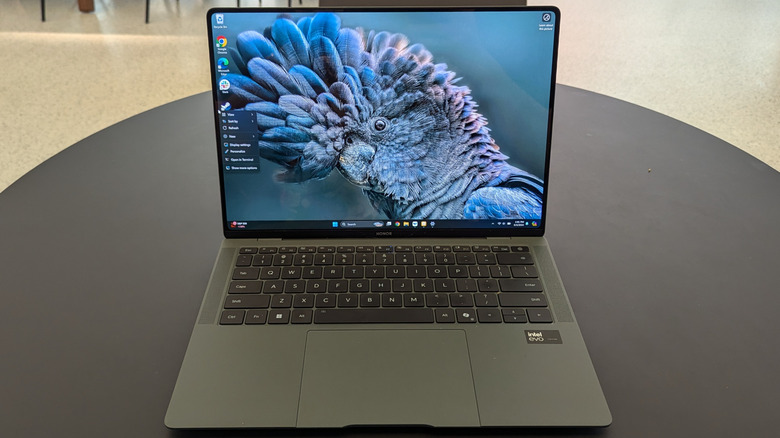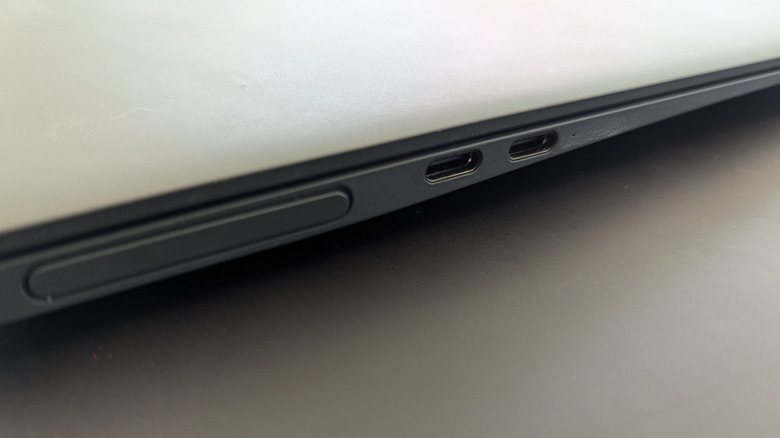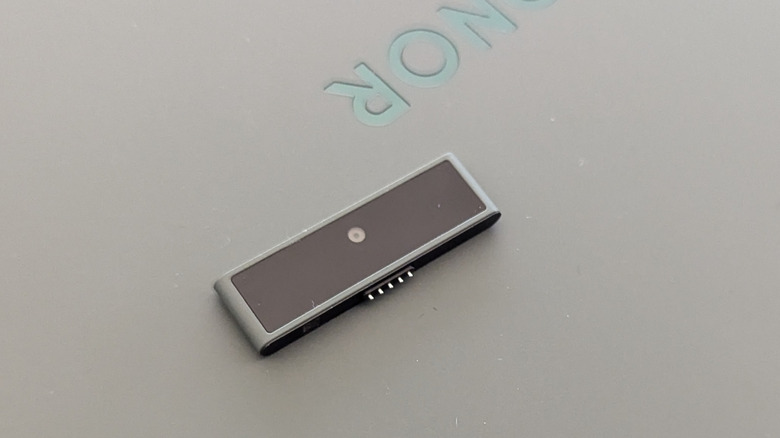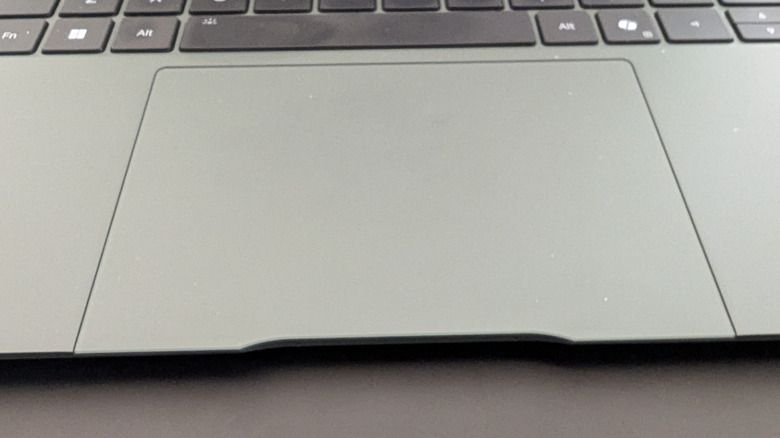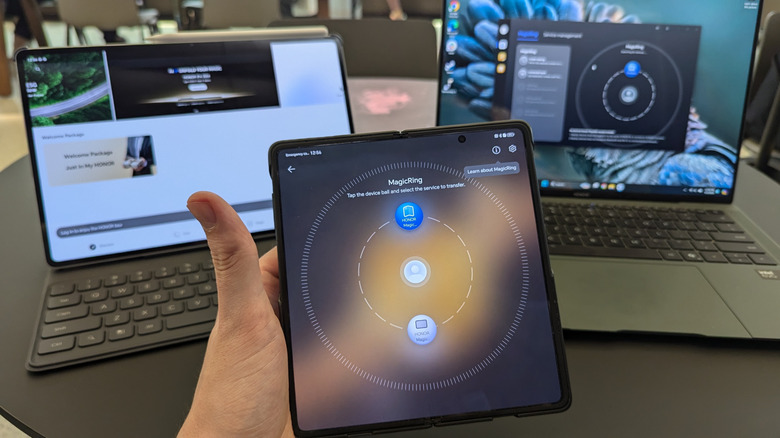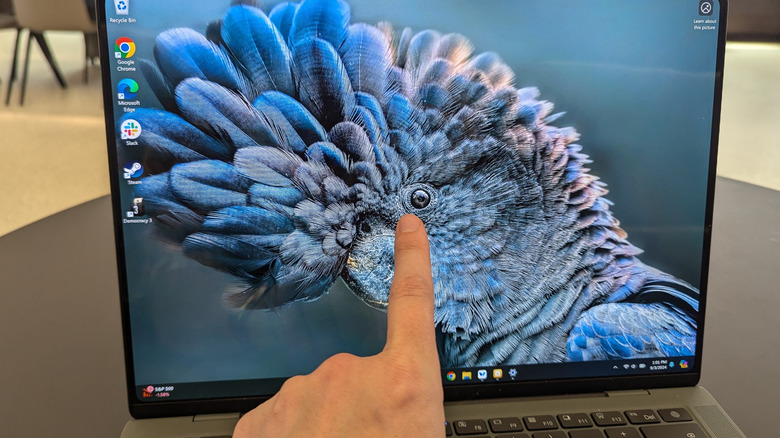Honor MagicBook Art 14 Review: Solid Tech, Superb Engineering
- Beautiful Touchscreen Display
- Extremely Light and Thin
- Interesting Webcam Solution
- Solid specs for its class
- AI-ready
- Honor Ecosystem needs a bit of polish
- Not Sold In U.S.
The laptop world is quite crowded, especially when you start shopping in the $1000-ish price bracket. Here you have high-end efforts from major companies like Asus, Acer, and Lenovo — many of which have their own little quirks like detachable screens, or weird folding designs. Then you have last year's gaming laptops that have dropped in price by a few hundred bucks, and you also begin to venture into MacBook territory — with Apple's entry level MacBook Air usually retailing for just under $1000. So standing out can be tough.
That may be why Honor has made a statement of intent with the MagicBook Art 14. It has a touchscreen, it's logic-defyingly thin, it's cobbled together from space-age materials, and it's very much AI ready. But as many a sore laptop buyer knows, a spec sheet isn't everything. Creating something that's reliable and comfortable to use is a seemingly difficult task, and many a laptop has been solid on paper but an absolute nightmare once it hits your actual lap.
In an attempt to separate the experience from the raw specs, I've used a MagicBook Art 14 (provided by Honor for testing) as my daily driver for a few weeks. It's accompanied me on four work trips, served as a go-to at home, and had a chance to play around with Honor's new folding phone and tablet. This is how it did.
The specs are impressive for a work laptop
In terms of raw specs, you're getting a lot from the MagicBook Art 14. The model we tested came with 32GB of RAM (though a 16GB model is available), and a terabyte of storage as standard. The processor, an Intel Core Ultra 7 155H, can boost to a spicy 4.8 GHz and is capable of juggling multiple tasks with ease.
While the specs are impressive, and the MagicBook Art 14 should eat most administrative and writing tasks alive, it is still rocking integrated graphics. This means video editors might experience long wait times, and current-gen gaming is pretty much out of the question. The MagicBook will run older games without much of an issue, including "Fallout: New Vegas" and anything else over about seven years old. There's also the likes of the streaming service GeForce Now if you really want to rip through your Steam catalog on this machine.
There's also some biometric login capability in the form of a fingerprint scanner. The scanner works pretty well and allows you to access the laptop in seconds. I'd estimate the failure rate as about one in every ten or so attempts, and in those cases I'm usually in on the second try.
A generous number of ports are on offer too. Despite the ultra-slim profile you have one USB-C port, one Thunderbolt 4 port, a USB-A port, an HDMI port, and a 3.5mm headphone jack. I'd argue this alone puts it ahead of a MacBook. You won't see Honor rinsing people for adapters.
It's AI ready, but Honor has some help
Honor has placed a heavy focus on AI in recent months, and the MagicBook Art 14 is part of this trend. The laptop is packing an Intel Core Ultra 7 processor, which is tuned with AI in mind. This should give the laptop an edge when running AI programs offline.
As far as what AI programs you'll be running on the laptop, if any — Honor is leaning heavily on its partnership with Microsoft. This means many of the practical AI offerings are just Microsoft CoPilot, which requires an active Office 365 subscription, unless you want to use the Edge version or have wrangled a free trial.
I'm not knocking Microsoft's AI offering, but it would be nice if Honor was putting its own software at the forefront instead of relying on partnerships. This happens to some degree with transcription on the Honor Notes App and the "Global Favorites" folder which allows you to dump files, sites, and other things that you want to access from all of your devices in a convenient location (basically a network folder or alternate-universe Dropbox). But it still feels a bit early days. AI is implemented in a few other areas though, which is why you'll see those overused letters peppered throughout this review.
There are a lot of high tech materials involved
A lot of the laptop's characteristics don't come from its chipset. Instead, Honor is relying on the materials involved and some fairly clever engineering. For example, the keyboard is made of titanium which adds to the lightness and durability of the whole device. You can't really tell that from feel, they just have the texture of high-quality keys. Each keystroke is soft, and there is a generous amount of travel for something on a device so compact. I must've put 20,000-30,000 words through this laptop over the last couple of weeks and my hands feel perfectly fine, so it's a great choice if you have a lot of intensive work to do.
The body of the laptop is also made from a fancy magnesium alloy of some kind. This is usually where a manufacturer says something about aircraft grade aluminum and then harps on about the number of former coke cans that ended up in the frame — not Honor. They're letting you know how light and durable your potential purchase is. It's pretty refreshing, and makes it sound more like the rims of a supercar than a work laptop. The casing weighs about 30% less than what Honor used on its previous comparable device, while the titanium keys knock 16% off the total weight. The whole thing weighs a shade over two pounds and is thinner than most tablets, throw it in a bag and you'll barely notice it's there.
It's all coated in a "satin enamel" which gives the MagicBook 14 a smooth and high quality feel. There are no sharp edges either, the finish and quality control on this notebook are completely perfect. It comes in two colors: Sunrise White, Emerald Green, and Starry Grey. The green is pretty grey looking in most lights, and has a slight military green look to it in others. It's basically a stealth edition.
The cooling system does a solid job too
Have you ever had a laptop that sounds like a jet engine under a very light workload? Or one that feels like you're resting a small bonfire on your thighs? Or even one that frys your fingers as you type away on it? Temperature control is a common issue with laptops and when it's poorly done it's not good for you or the device.
Fortunately this is an area where Honor has again nailed it, despite having to offer a good level of performance and fit everything into a ridiculously small profile. The Chinese manufacturer seems to have put a lot of effort into doing so.
A vapor cooling system Honor describes as "revolutionary" has been built into the laptop, and when the silicon carbide fans do boot up they're almost silent. The thin and hi-tech body also has an antenna woven into it, which means picking up on a WiFi signal isn't a problem.
The display and audio are as good as you need
While I wasn't sitting there with a big protractor, and trying this out made my head hurt, I did manage to sort of read a few lines from what I would guess is a 160 degree angle. While you will see light refracting on the screen's surface at that sort of extreme, you can still make 11 point type out surprisingly clearly. So if you're watching something with a few other people, no one is going to get their view ruined. The bezel is also tiny, measuring just 2.2mm around. The square 3:2 aspect ratio takes a bit of getting used to, but isn't a hindrance. Resolution wise, 3120 x 2080 pixels is more than you really need on a screen of this size, and everything looks razor sharp. Brightness goes up to 700 nits, so you can work in a very bright environment but you may struggle in direct sunlight. In the average room during the day, 30-40% brightness is more than enough. A 120 Hz refresh rate is also pretty easy on the eye.
AI makes another appearance in the MagicBook Art 14's audio department. The laptop features six speakers, which the proprietary "HONOR Spatial Audio Engine" uses to create a wide variety of effects. Apparently the engine uses AI to produce 3D audio. In real terms, movies sound great while music sounds crisp and clear. The little laptop isn't going to produce the kind of bass that will make your walls shake, but it's good for a bit of Bowie or Queen.
Battery life is solid, and charging is quite quick
From a full charge, the Honor MagicBook Art 14 should be able to handle nine to ten hours of "office work." Obviously that battery life will vary based on what you're using the device for and various other settings. Bluetooth will shorten it very slightly, and a bright screen may cause a significant drop in battery life. Conversely, you can slap it on battery saver mode and get close to a full day out of it.
When you do have to plug it in, it won't have to stay wired for long. Charging is pretty quick and it pretty much reaches capacity within an hour. Charging is done via a USB-C cable which is fast becoming the standard these days, and rightly so. The cables themselves, and the 60-ish watt blocks you need to charge most laptops are relatively common, and a refreshing step forward from the random barrel jack and weird amperage requirement era.
The battery itself is a proprietary "Heterogenous Battery Design" which uses multiple battery blocks of varying thickness. This allows Honor to achieve the laptop's slim profile by spacing those blocks out — making particular use of the area around the hinge. There may be a downside to this, as that sounds like a nightmare to replace. Slapping in a new battery can give a laptop a new lease of life, and is fairly simple on a lot of models. However, that's a problem for tomorrow. For now, you have an exceedingly slim and well balanced device.
The webcam is well implemented
When you first pick up the Honor MagicBook Art 14 you might be wondering where the webcam is. Well, to solve the mystery, it pops out of the left hand side of the laptop and magnetically attaches to the top of the device when you need to use it.
This sort of system has its ups and downs, but overall I'd argue its a positive. To start with the downsides, a very obvious one is you can quite easily lose your webcam. It's a very small thing, the magnets involved are only so strong, and if you're not vigilant about popping it back in its slot it can easily go bye bye, This won't leave a hole in the side of the laptop as a flat piece of trim follows it out and plugs the gap. But it will be a massive inconvenience. On the flipside, if the camera does break replacing it should be a pretty simple process.
Then there's the loss of Windows' webcam-based login — which is a quick way to access your device and authorize things like payments. Digging the camera out and setting it up is more of a pain than just using the fingerprint scanner.
However, the positives far outweigh the negatives. First, there's privacy. You may not trust electronic camera shut offs, and even a physical barrier may leave you wondering. But if the camera is detached and stored in a whole different part of the laptop, there's zero chance it's spying on you. Versatility is also a plus, you can mount it backwards and broadcast whatever your laptop is pointed at if you want to, or simply have it facing towards you.
As for the overall quality, it's pretty much a standard 1080p webcam. It could be sharper, but it will more than do the job if you simply need to show your face at the occasional office zoom meeting.
The touchpad has its plus points, but the touchscreen is better
The bottom part of the laptop is dominated by a very large touchpad — something Honor claims is industry-leading. As you may expect, it's capable of detecting a wide array of gestures from obscure swipes to knuckle taps, all of which can make using the laptop that little bit easier. It's arguably a bit too large as I'll often accidentally catch part of it while typing and find myself writing away in the wrong area. It also carries all the way to the edge, which means you may again catch it if you're using the laptop on your actual lap.
Despite being a bit too big for comfort, it has its plus points. Tracking is good, and overall the pad is very comfortable to use. It tracks gestures easily, and you can adjust both screen brightness and volume by running a finger up or down the left or right sides respectively. As with the touchpad in general, you will accidentally hit both the brightness and volume adjuster regularly.
The laptop also comes with a touchscreen, which is absolutely superb if lazy scrolling is your thing. Again, the touchscreen is well implemented. There's no drag on the surface, your finger glides across it. The screen is also very sensitive to input so you won't find yourself aggressively prodding it and waiting for something to happen. Touchscreens take laptops to the next level, especially when they're as well implemented as Honor's effort.
The ecosystem Honor has built is a massive plus, but needs a little work
The laptop is capable of making good use of Honor's "Magic Circle," which itself is a solid base for the ecosystem the company is trying to build. On a good day, Magic Circle will automatically detect other Honor devices you have in close proximity to the MagicBook Art 14. Those devices will then connect over WiFi or Bluetooth. The devices can then share files, internet connections, screens, you name it. When it works, it's on par with the likes of Apple. However, it may need a little polish.
On my home WiFi network, all I had to do was sign in to each device with my Honor account and connect to the internet. The whole Magic Circle thing took care of itself and it was all there when I needed it. However, on the road it's a different story. I can't even pair the laptop with Honor's phone (see our Honor Magic V3 Review) and tablet successfully via Bluetooth, never mind get all three to play nicely together.
So Magic Circle is a potential game changer, especially if you have multiple Honor devices. It just needs a little bit of work on Honor's part to get it working as seamlessly in an airport lounge or hotel room as it does in my kitchen.
This is a superb laptop
Between testing various devices professionally, and some catastrophically bad luck/decision making on a personal level, I've spent a lot of time on a lot of laptops over the last couple of years. As far as work-focused machines go, this ranks amongst the best and may actually be king of the silicon mountain.
It ticks all of the boxes when it comes to a travel laptop. It's light, it doesn't feel like it's about to combust the second you dare open more than three tabs on Chrome, the battery life is enough to get you through a full working day, it charges via USB-C, the speakers are nice, the screen is fantastic, and it's very comfortable to type on.
If I was in the market for a new work laptop, this isn't even a case of "it would be a strong contender," I'd just buy this one. Even if getting your hands on the Honor MagicBook Art 14 is a bit of a pain. This version of the Magicbook Art 14 will be released on September 20, 2024, but an earlier version can be purchased in international markets now — stay tuned for final price info.
